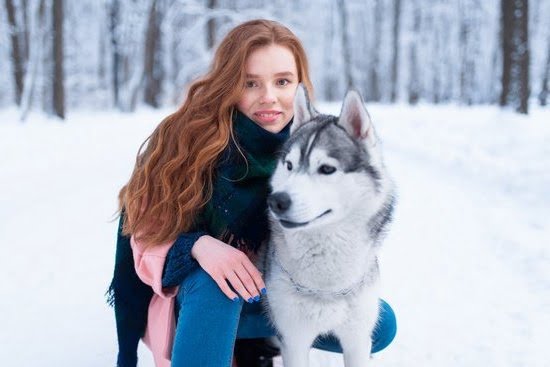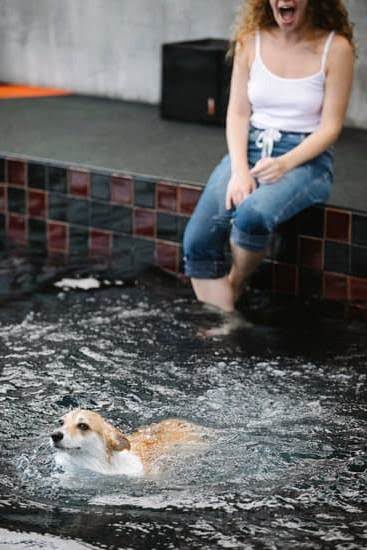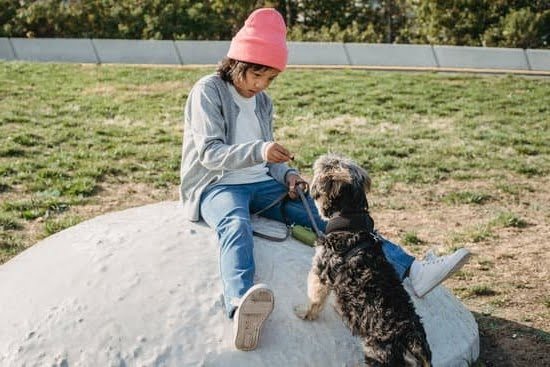Introduction
Potty training is an important aspect of dog ownership. Not only does it help keep your home clean and free from odors, but it also helps to ensure that your pet is happy, comfortable and healthy. Unfortunately, if a dog is not potty trained in the first year of its life, it can be difficult to get them to learn the necessary behaviors as they grow older. This article will look at some reasons why a dog may still not be potty trained after a year, as well as any strategies you can try to bring about successful results.
Common Reasons a Dog Might Not Be Potty Trained After a Year
There are a few common reasons a dog might not be potty trained after a year. It could be because the owner has not been investing the time or effort into teaching their pup potty training basics. In fact, according to some recent studies, while the majority of owners want their dog to be totally housetrained within 6-12 weeks, many weren’t able or weren’t taking the time to properly train their dog. One study also found that owners often adapt incorrect techniques when training their pets and as a result take longer than necessary to house train their dogs.
Other factors may include unclear communication between pet and owner. If a pet is being given inconsistent cues or expectations too quickly they can become overwhelmed and confused. This lack of direction can impede the process of learning basic housetraining skills. Finally, a lack of positive reinforcement can also lead to slower progress in housebreaking efforts. Dogs respond better to reward-based positive reinforcement versus punishment for unwanted behaviors; thus, rewards like treats or verbal praise should be given in order for your pup to learn more effectively.
Understanding Dog Behavior
When it comes to potty training a dog, there are several behavior types that can be encountered. The most common are avoidance, escape, marking territory and attraction-seeking. Avoidance behavior is when the dog attempts to avoid pottying in its designated area. Escape behavior is when the dog runs away at the sight or mention of being taken to its designated potty area. Marking of its territory is seen if the dog tries to poo in various places throughout the home instead of just in its designated area. Attraction-seeking occurs when the dog tries to poo in areas with lots of stimulation such as under a table or near somebody’s feet. All these behaviors can be successfully managed using positive reinforcement techniques such as rewarding with treats, verbal praise, and playing with toys immediately after successful potty trips outdoors. If a dog has not been successfully house trained after one year, talk to your vet to check for any medical issues that may prevent it from understanding and following your commands, consult a canine behavioral specialist for an individualized training plan, or consider implementing more strict measures such confinement and supervised outside trips if necessary.
Working With Your Dog
When trying to potty train a dog it is important to create a positive learning environment. First, make sure to provide plenty of opportunities for your dog to go outside and go potty. When possible, take your pup outdoors every two to four hours—each after meals or drinks, during active playtime and when he seems like he might need to go. Second, reward your dog for successful elimination outside – give visible praise when they poops or pees in the correct spot. You can use treats or verbal praise such as “good girl” and “good job”. Offer up continuous rewards in this way even after your dog has learned the behavior; that way they will remember the desired outcome that follows their action. Third, keep an eye on where your pup is eliminating inside if it does happen and clean up the mess with an enzymatic cleaner to eliminate any trace of smell that could attract him back there again. Lastly use consistency; consistently take your pup out more regularly and reward them properly every time they go outside, as well as watching closely where they pee/poop when inside. With persistence, patience, and perseverance you can get a year-old pup potty trained soon enough!
Preparing Your Home
Creating a potty zone for your dog is an important step in the potty training process. If you are having difficulty potty training your dog after a year, investing some time and effort into creating a designated potty area can be helpful. Firstly, select an area that meets all of your dog’s needs and make sure it is secure. Look for somewhere away from high-traffic areas, where there is minimal risk of distraction or interruption. Make sure that the area is well-lit if you plan on doing any nighttime visits, and has easy access to drains or gardens where necessary.
Additionally, use lots of positive reinforcement whenever you take your dog to the potty zone to create positive associations with going to the bathroom in this area. Take them to this spot when it’s time for them to do their business before taking them out for walks or other activities. Offer treats and affection when they successfully complete their business in the pawpicked location and consider using puppy pads if they have accidents while still getting accustomed to their new routine. Lastly, it is important to clean up accidents right away to prevent further confusion and discouragement over toilet breaks.
Issues To Consider
Potty training a dog can often be a long and trying process. Unfortunately, in some cases, a pup may never reach full potty training even after a year of effort. If this is the case with your dog, there are certain things you should consider in order to help them reach their goal.
First, consider if there are any physical or medical impediments to your pup’s potty training. It is important to note that pups under four months are unable to control their bladder or bowels until they mature and become adults, so asking them to show great restraint at this stage of their life would be an extreme challenge for them. Additionally, dogs with disabilities due to age or otherwise have decreased proprioception and might struggle more than able bodied doggies when it comes to potty training mastery.
In any case, be sure not to pressure your pup too heavily when nearing the one-year anniversary of beginning potty training as they may already feel overwhelmed by the process. Take it slow and work together step by step towards success.
Setting and Reaching Goals
Setting and reaching goals can be a powerful tool when working to potty train a dog after a year of unsuccessful endeavors. It is important to set realistic goals, both short term and long term. For example, it may not be realistic to expect that you will successfully potty train your dog in one day, but setting the goal of having your pup consistently ask to go outside and do their business within a certain time frame could be achievable.
When starting the process it is helpful to break down each component of successful potty training. Set clear guidelines as to when and where your pet should be doing their business by offering consistent rewards for successes in those areas. You should also plan regular elimination times with enough intervals so they don’t experience too much discomfort while learning the new skill – take them out hourly when first starting to increase instances where successful elimination occurs!
It is also important to recognize small moments of success along the way. Celebrating these successes can help boost your pup’s confidence and remind them that good behavior equals positive results. Additionally, even if mistakes have been made, remember not to punish them for these errors as this could lead to further confusion or behavioral issues later on down the line. Instead, simply clean up the mess, celebrate any moments of success that did occur from prior attempts and move forward with renewed focus towards achieving your ultimate goal – training success!
Professional Assistance
Working with an experienced professional can be extremely beneficial when trying to potty train a dog. A professional can assess the individual needs of the dog and guide the dog owner in establishing an effective potty training routine. They can provide advice on housebreaking techniques, along with handling behavioral issues that may be affecting the progress of a dog’s potty training.
Additionally, a professional can provide support and assistance throughout the process, helping the dog and its trainer foster positive habits for success. They will monitor progress and provide feedback about any changes or improvements needed to ensure successful potty training. Professional assistance also ensures that humane methods are fully adopted, reducing stress levels and discomfort for all involved during this time-consuming process.
Conclusion
It is completely normal for dogs to take longer than a year to get potty trained, and this is something that can be incredibly frustrating for owners. However, it’s important to remember that if you stay patient and consistent with your training efforts, you will eventually see results. This may take some time so it is important to stay positive. To encourage and motivate readers who have had difficulty potty training their dog after a year, it is helpful to share stories of personal success or advice from people who have faced similar struggles. For example, hearing how one person successfully potty trained their dog in two months despite having attempted potty training for two years can be tremendously motivating. Additionally, sharing tips on how one person was able to differentiate between potty signals can provide valuable insight into a successful potty training experience. It is important to remember that every dog is different, but with patience and perseverance, even the most stubborn pup can eventually be housebroken!

Welcome to the blog! I am a professional dog trainer and have been working with dogs for many years. In this blog, I will be discussing various topics related to dog training, including tips, tricks, and advice. I hope you find this information helpful and informative. Thanks for reading!





